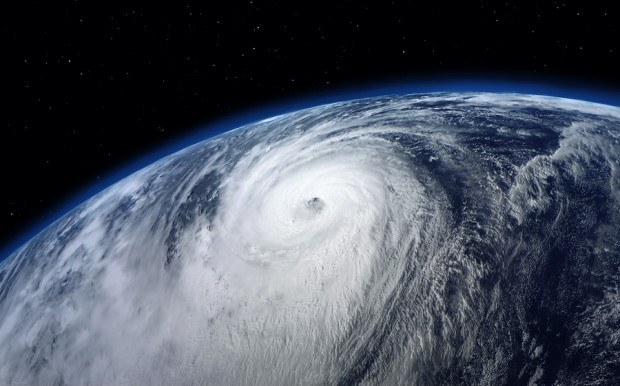Typhoon Rammasun, locally known as Glenda, is now over the South China Sea, packing maximum sustained winds of 140 kilometers per hour (87 mph) and gusts of as much as 170 kph, the weather bureau said in a 5 p.m. advisory. The storm will exit Philippine territory tomorrow afternoon and head northwest toward China, it said.
At least six people were killed by falling trees or collapsing walls, Alexander Pama, executive director of the government’s disaster risk agency, said in a televised briefing. The typhoon displaced more than 338,000 people and damaged at least 321 homes, Social Welfare Secretary Dinky Soliman said in another briefing.
“The objective has to be to minimize the casualties and the hardship of our people,” President Benigno Aquino said yesterday. Aquino was monitoring the response to the disaster from his office in Manila today, his spokesman Edwin Lacierda said in a mobile-phone message.
The lowest alert in a four-scale warning system is still in effect for several areas including Metro Manila. Government offices and schools in the capital and all areas under at least a Signal 2 — the third-highest alert — were closed today, except for agencies involved in vital services and disaster response. There was no trading and settlement in the currency and bond markets and the Philippine Stock Exchange was shut.
Power Cuts
Schools in most cities in the metropolis will remain closed tomorrow, according to a government website.
Manila Electric Co. said power was cut to almost 90 percent of its customers in the capital and nearby provinces, where about a fourth of the nation’s 107 million people live. Strong winds toppled power poles and brought down transmission lines, the company said on its Facebook page, without giving an estimate on when supply may be restored. Eleven provinces were still without electricity, the disaster agency’s Pama said.
The company targets to bring power back to 60 percent of the capital, Energy Secretary Jericho Petilla said in an interview with ABS-CBN News Channel.
As many as 6,000 people were stranded in ports, with at least 11 roads and one bridge outside Manila impassable, the National Disaster Risk Reduction and Management Council said in a 6 a.m. update. About 230 international and local flights were canceled, Pama said.
Airplanes
A Singapore Airlines Ltd. plane came into contact with an aerobridge at the Ninoy Aquino International Airport in Manila as strong winds moved the aircraft, the company said by e-mail. A Malaysian Airline System Bhd plane damaged its fuselage after it hit a set of service stairs stationed nearby while it was parked at the cargo terminal, Manila airport general manager Jose Angel Honrado said.
“The Malaysians and Singaporeans are assessing their aircraft to decide on what to do,” Honrado said by phone. The airlines were asked to secure the planes to prevent further damage, he said.
The typhoon grounded a ferry in Batangas province and a cargo vessel in Cavite, the Radyo Inquirer reported, citing Coast Guard spokesman Commander Armand Balilo, adding that no one was hurt.
Mall Damaged
Strong winds damaged part of an external wall at one of Ayala Land Inc.’s malls in the Makati financial district, the company said in an e-mail, with no injuries.
The Philippines, battered by cyclones that form over the Pacific Ocean, is the second most-at-risk nation globally from tropical storms, after Japan, according to Maplecroft, a research company based in Bath, England.
Super Typhoon Haiyan, the strongest storm in the world to hit land, killed more than 6,200 people in the Philippines in November and left more than a thousand missing. Haiyan, the equivalent of a Category 5 hurricane, had top winds of almost 196 miles per hour and winds as fast as 235 mph, the U.S. Navy’s Joint Typhoon Warning Center said.
As many as 10 typhoons may develop or enter the Philippines in the third quarter.
Fishermen Missing
A 45-year-old woman and her 18-year-old son who were gathering grass to feed cattle were killed on July 14 after they were struck by lightning in Batangas, a province south of Manila, the police said. A 25-year-old woman in Northern Samar died after she was hit by a toppled electricity post, the government’s risk agency said. Three fishermen went missing yesterday off the island province of Catanduanes.
In Albay where the storm first hit and which has been placed under a state of calamity, trees were uprooted and some homes made from light wood damaged, Colonel Raul Farnacio, a provincial army commander said in a mobile-phone message.
At least a dozen high-voltage power transmission lines have been affected, isolating the Bicol region where the storm made landfall, transmission company National Grid Corp. of the Philippines said in a 7 a.m. update.
–With assistance from Ditas Lopez in Manila.





















 Executives on the Move at Liberty Mutual, Cowbell, W. R. Berkley
Executives on the Move at Liberty Mutual, Cowbell, W. R. Berkley  Five AI Trends Reshaping Insurance in 2026
Five AI Trends Reshaping Insurance in 2026  California Workers Comp Combined Ratio for 2024 Highest in 20-Plus Years
California Workers Comp Combined Ratio for 2024 Highest in 20-Plus Years  Good Times for U.S. P/C Insurers May Not Last; Auto Challenges Ahead
Good Times for U.S. P/C Insurers May Not Last; Auto Challenges Ahead 



